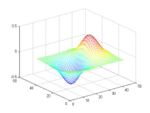Analysis Of Variance
 From Conservapedia
From Conservapedia | Statistics | |
|---|---|

| |
| Major approaches | |
| Frequency probability | |
| Bayesian inference | |
| Non-parametric statistics | |
| Common methods | |
| Analysis of variance | |
| Chi-Square test | |
| Students t-test | |
| Z test | |
| Linear regression | |
| Bayesian model selection | |
| Bootstrapping | |
Analysis of variance or ANOVA is a statistical method for comparing different models. Models are built with explanatory parameters that attempt to describe the variance of a given data set. The amount of the variance explained by two models are compared and a corresponding value is calculated for how well one model explains the data relative to the other compared models. This value is called the F-value (named for R.A. Fisher who developed the first ANOVA model). The larger the F-value the better one model explains the variance than the others. In order to determine statistical significance the f-value is compared to a specific Fisher distribution based on the degrees of freedom. The Fisher distribution can give the probability that a given data set was derived from one model relative to another.
The ANOVA test makes several assumptions about the data including that the error is independent, that the data is normally distributed, that error variance is heteroscedastic and homogeneity of variance.
The one-way ANOVA is probably one of the most used statistical methods for comparing data sets. Today most scientists calculate it using a statistical software package, of which several are available.
Categories: [Probability and Statistics]
↧ Download as ZWI file | Last modified: 02/24/2023 07:28:16 | 15 views
☰ Source: https://www.conservapedia.com/Analysis_of_variance | License: CC BY-SA 3.0
 ZWI signed:
ZWI signed: KSF
KSF